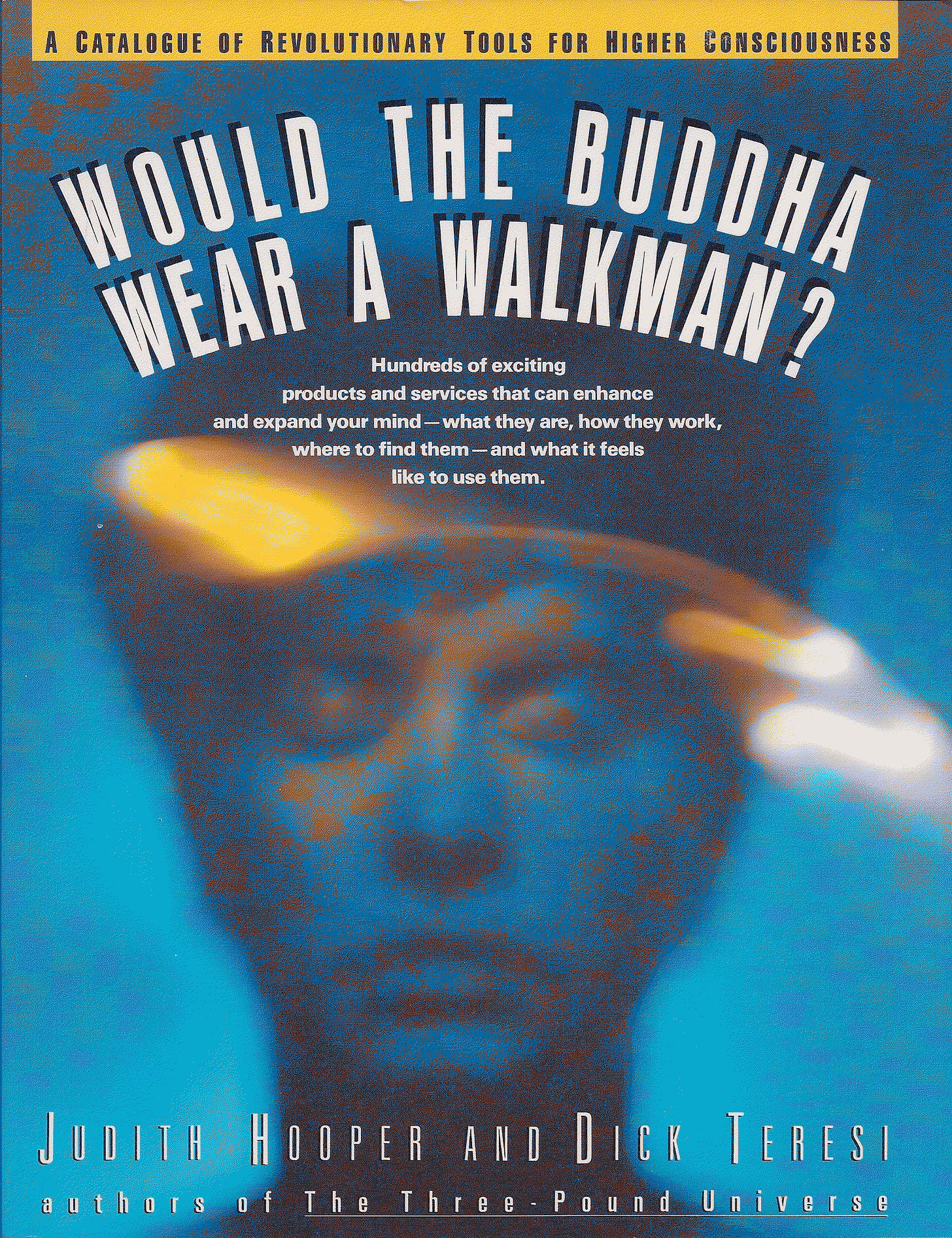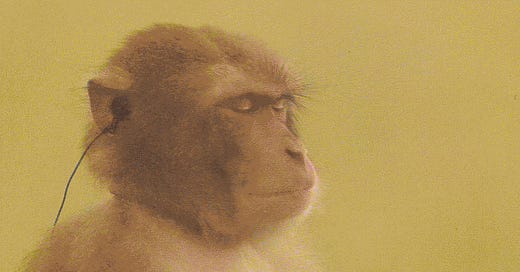
A few months ago I wrote a newsletter about lucid dreaming. After a night of uncharacteristic sleep deprivation, I’d experienced a visceral flying dream, after which, curious, I lurked some message boards, read the literature, and casually started performing “reality checks:” small daily rituals designed to test whether or not I am, in fact, asleep. My reality check of choice is counting my fingers, and the first time I found myself doing this in a dream my hands looked like the telltale flippers of bad generative AI. One finger had a smaller finger jutting out at the knuckle.
The weirdness was enough to jolt me into lucidity, which was the point.
So now I know how to wake up within my dreams, but controlling them is another matter. Dreams have their own logic. To change scenes, for example, you have to seek out a door or an elevator; dreams require a superficial context for conveyance. Failing that, a television set will do: you just have to twiddle its knobs until a new landscape emerges from the screen. To stabilize the dream, spin in place like a dervish. To fly, find a window and jump. To force yourself awake, it’s best to just find a bed and fall asleep inside the dream—and if you wake up in another dream, you can always rule out a “false awakening” by counting your fingers again.
These are tips I’ve picked up from the dream forums, where oneironauts share strategies for getting around the dreamworld. Reading their reports, I’m struck by their sense of shared place. No matter where the sleeper lays their head, the physics of dreams are unchanging. All dreams have a ground, for example. You cannot witness your own death in a dream without the dissolution of the dream. All dreams resist written symbols. Numbers and letters are so rubbery in dreams that simply trying to read something is a powerful reality check (someone on the lucid dreaming Reddit recently reported that their watch, in a dream, read 11:Y).
The ineptitude with numbers is not limited to the dreamer, or to the dream itself. Studies have shown that “dream characters,” the entities we interact with inside of our dreams, are useless at math. Although they can be creative and ingenious interlocutors, when tasked with arithmetic, dream characters can’t solve problems above a primary-school level, and are especially stymied by addition and subtraction.
Oneironauts largely agree that dreams are in color, although it was scientific consensus, well into the 1960s, that all dreams were black and white. The black and white dream era spanned, roughly, from the invention of photography to the invention of color film. It’s fun to speculate that black and white movies so affected the collective subconscious that they permeated our dreams, but it’s more likely that we don’t dream in black and white or in color but rather in some more indeterminate palette, to which, upon waking, we impose interpretations based on the world around us. As the philosopher Eric Schwitzgebel writes, “perhaps dream-objects and dream-events are similar to fictional objects and events, or to the images evoked by fiction, in having, typically, a certain indeterminacy of color, neither cerise nor taupe nor burnt umber, nor gray either.” Is fiction in black and white? A question for another night.
I know this newsletter is ostensibly about technology and biology, but I can’t help myself from pursuing interestingness, so here we are. We could call dreams an “interface” if it makes us feel better. Or a benchmark for consciousness, something far beyond the so-called hallucinations of neural networks. As the philosopher David M. Peña-Guzmán lays out in his book When Animals Dream, dreaming is not unique to humans, or even to mammals, despite the fact that most animal sleep researchers prefer to use guarded euphemisms like “oneiric behavior” and “mental replay.”
In the conclusion of a famous study of sleeping zebra finches, which revealed that the little birds sing in their sleep—rehearsing, note for note, the songs that mark their days—the authors proposed that this nighttime “replay” was a merely an “algorithmic implementation” rather than anything like a human dream. As Peña-Guzmán comments, in this framing, the finches do not experience their own dreams “any more than a laptop experiences running Adobe Reader or Microsoft Word.” Needless to say this is not Peña-Guzmán’s view, nor is it mine. A mountain of electrophysiological, behavioral, and neuroanatomical evidence supports the vast dreaming lives of animals, that is to say, their meaningful inner world. I wonder if a zebra finch, or, for that matter, the overweight domestic shorthair currently asleep on my shoes, could ever have a lucid dream. What might they choose to do in that dream that they couldn’t do upon waking? And would they think it was real?
In Tibetan Buddhist sleep yoga, the dreams we have at night are considered “example dreams:” spiritual clues to the fundamentally illusory nature of waking reality, which is the actual dream. In Western lucid dream technique, reality checks like counting your fingers are a way to differentiate waking and dreaming states, to underline their difference; in Buddhist practice, from what I understand, similar “illusory form” meditations help to remind you that everything is a dream, including death—the dream at the end of time. Anyway, I had to laugh when I found this book at the thrift store:

Published by former editors of Omni Magazine—someday I’ll share the story about my tenure as the editor-in-chief of a scrappy, and, as it turned out, wholly illegitimate Omni reboot—it’s a Whole Earth Catalogue-esque index of New Age tech, including a number of dream hacking tools, like digital dream diaries and REM-detecting lucid dreaming goggles designed by the psychologist and preeminent lucidity scholar Stephen LeBerge. The full book is on the Internet Archive if you want to browse it (as is Mind Mirror, Timothy Leary’s “self-help life simulation software” on CD-ROM).
Most of these New Age techno-gadgets may seem silly now, but dream tech is alive and well. A well-funded startup called Prophetic is threatening to train machine learning models on EEG and fMRI lucid dream data, then beam its findings via ultrasound directly into willing brains—their Halo device, “the most advanced neurotech wearable ever created,” can be pre-ordered for $2,000. At the other end of the spectrum, the Dormio, which you can hack together yourself in a weekend, promises easy dream incubation by whispering prompts into your ear at the most suggestible moments of hypnagogia. The latter, Michael W. Clune writes in a great Harper’s piece, offers an unsettling glimpse into the “mind’s ceaseless, devouring creativity,” which can be as frightening as it is is exhilarating. Your mileage may vary.
Anyway, back to the waking world. On February 8th, I’ll be giving a brief virtual talk at the School of Visual Arts about new frontiers in biocomputing—think slime molds, fungal architectures, and new biological substrates for AI—and talking “wetware” with Mindy Seu, of Cyberfeminism Index fame, and Yasaman Sheri, principal investigator of the Synthetic Ecologies Lab at the Serpentine Gallery. RSVP for “The Algorithmic State: Wetware, Fermented Code, and Artistic Inquiry” here if that sounds fun to you.
xo
Claire






Mu.
Your read here reminded me of a Koan.